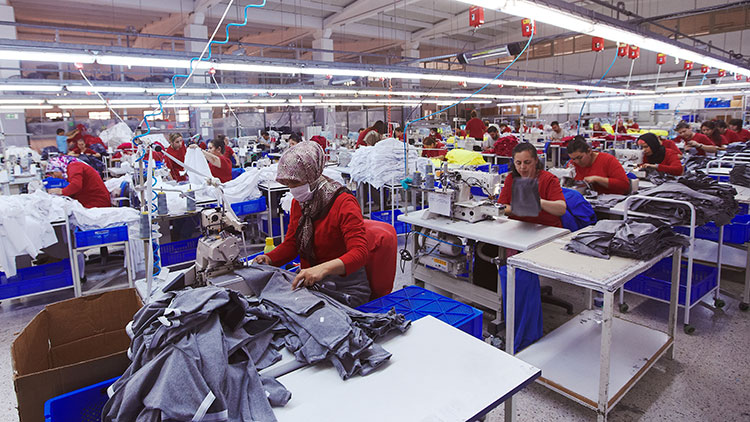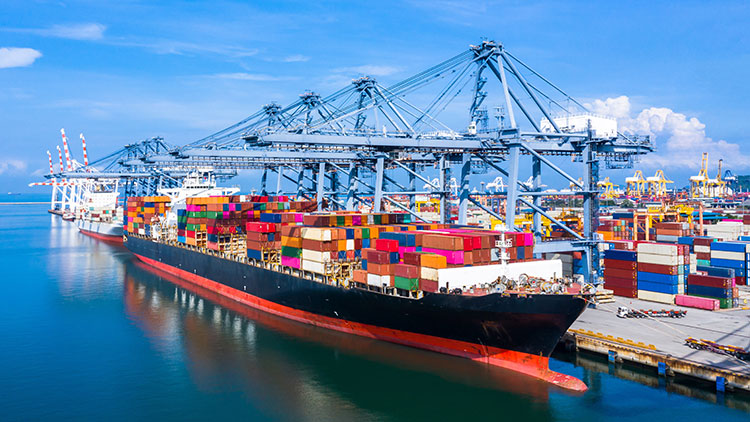The world has changed and so has garment production. Textile consultant Mike Horsten considers the supply chain approaches that businesses could take.
In the new times we find ourselves in, we wonder what's next in garment production. Do we continue on the same path or do we need to modify the roads we walked before? In the garment production and fashion worlds these are the questions people are asking in the boardrooms. Data can help, but consumers are not reacting the same as before the COVID-19 crisis hit: buying patterns are different and the will to go shopping is hampered.
So, what to do? The idea to bring production home is tempting, but what is needed to achieve this? Today garments and fashion items are made in in low-wage countries. The distance was never a problem before, but today shipping is more costly and not as reliable. Ships are not sailing and aircraft are mostly flying with medical equipment. As a result we need to rethink not only our production but our total supply chain. This includes consideration of the end user: if production is brought home the garments and fashion items will be more expensive – prices consumers may not be willing to pay in these times.
In the past we would use countries such as Pakistan, Bangladesh and India for the production of garments. The abundant number of employees in the textile market is more than enough to produce many garments and the average prices are low. At the same time increasing numbers of European consumers are beginning to look at these production locations as reasons not to buy. Shoppers are asking how their garments are made, what are the working environments like, how sustainable is shipping goods from the other side of the world. These are the legitimate concerns of, particularly, younger buyers.
However, offshoring will still make business sense for bulk production. You make 10,000 pieces, ship them and sell them. Knowing exactly what will sell is a science and an art. Even if stock remains on the racks for some time, retailers can always discount items – there is enough retail margin. Companies like H&M, Primark and Walmart worked in this way as they had enough stores and a big enough presence to sustain bulk buying. But even for them there are questions: will it arrive on time, can I sell all these, how much will be unsold and wasted? While the transportation crisis continues and consumers are buying less, we have to ask: it may have worked in the past, but will it now?
Near shoring is favoured more by companies who change their product range regularly to maintain maximum consumer interest. Zara (Inditex) is a great example of near shoring and even home shoring (really close to the consumer). Inditex produces many of their garments in Morocco, Spain and Portugal – the finishing done in Morocco, as there is a great little Spanish area there (Melilla ES). So, garments are produced in the EU but using low-wage employees from Morocco. Near shoring gives the company direct access to the garments produced, as they are already in the EU and transportation can be done by truck – fast, efficient and great supply chain control. The added benefits of fast design changes outweigh the production costs. Yes, they pay a bit more for each garment, but they can produce exactly what they need so the waste is virtually 0%.
What are the alternatives? The production of pre-made garments and decorating them later is a new activity, creating a whole new market. In the old days, only white T-shirts could be printed on digitally, so screen was the only option. But making screens, adjusting and underlaying white was not always easy. With the arrival of companies like Kornit, we see this market is booming, underlaying white to print on any colour shirt is now possible – with even better results than screen. The production cost of these devices has gone down tremendously; even smaller, non-industrial machines have come to this market from Epson, Ricoh and others. Producing the bulk shirts in low-wage countries and printing the decoration locally is a great way to be fast and have little to no printed stock. This solution is ideal for companies that deal mostly with internet sales, as they can produce garments on-demand.
Sportswear – think cycling, ice hockey and all team sports – is handled differently. For example, FC Barcelona fan shirts are produced offshore but the game shirts are produced locally, so there is never a risk of lacking enough shirts for the game. Fan shirts are produced in bulk and depending on the team could be made in the EU or in China. Interestingly the top sport apparel is mostly made in the Western world and is all near shored. Many of these garments are made in new EU countries like Czech Republic, Poland and Lithuania, which does not mean there are no companies in Belgium, Spain, Denmark, Sweden and so on – there are. The sportwear world today is very divided and heavily segmented, not only by sport but by season and brand, so defining the correct production method here is not going to be easy.
We still have our urban fashion companies who just don't have the money to invest in the larger quantities of fabrics, base garments and storage. Luckily, they can use local businesses who produce fabrics on the roll, as little as five metres. We have all heard of Spoonflower (USA and Europe) and Printing Fabrics from Spain, but there are many more suppliers in every area that can produce these smaller quantities of fabrics, thus keeping the urban fashionistas happy and creative.
The conclusion is not simple: each different approach can be beneficial on one hand and negative on the other. The best way is to investigate the new data, look at the market and take a close look at your company in the context of a changed world. Coming up with the right solution and showing leadership is not easy; one needs to have a new vision, a new creative approach to the supply chain, the help of a consultant and a bit of luck. If you don't, consider the now famous sentence from Heidi Klum: "One day you are in, next day you are out." Stay in this market and stay safe.
Mike Horsten
TexSmart consultants






